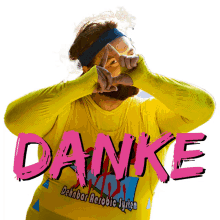Abroad, Pathé in particular was working on a colour system – Pathécolor – that made use of stencilling and/or manual colouring. This was a method that was already known in the field of picture postcards and wallpaper, whereby a stunning colour effect could be achieved by using different templates for each colour.
An example of this kind of colouring can be seen in the first part of the film Hollandse tulpen en klompen. This film is a compilation that consists of two short recordings. The first part is about the Dutch fields of flower bulbs. The first part is in colour, and was almost certainly made by Pathé Frères, most likely by its Dutch subsidiary Kinematograaf Pathé Frères.
This method of colouring was unique in the Netherlands, as the Dutch film companies only used the techniques of tinting and toning; the few film recordings made in the Netherlands that used colour stencilling are all of foreign (probably French) manufacture.



















